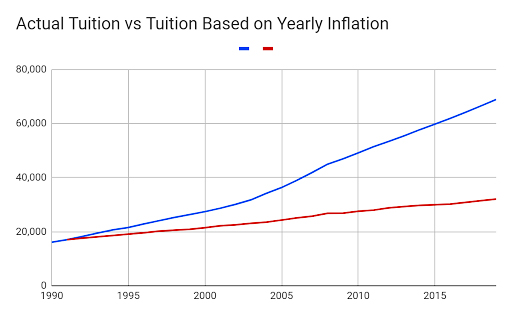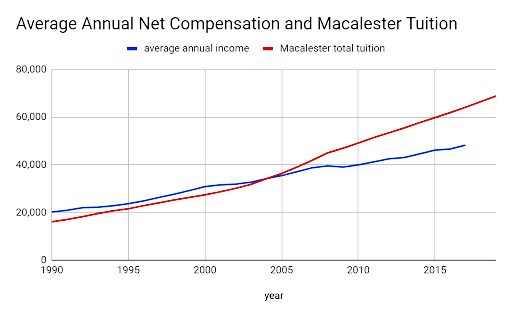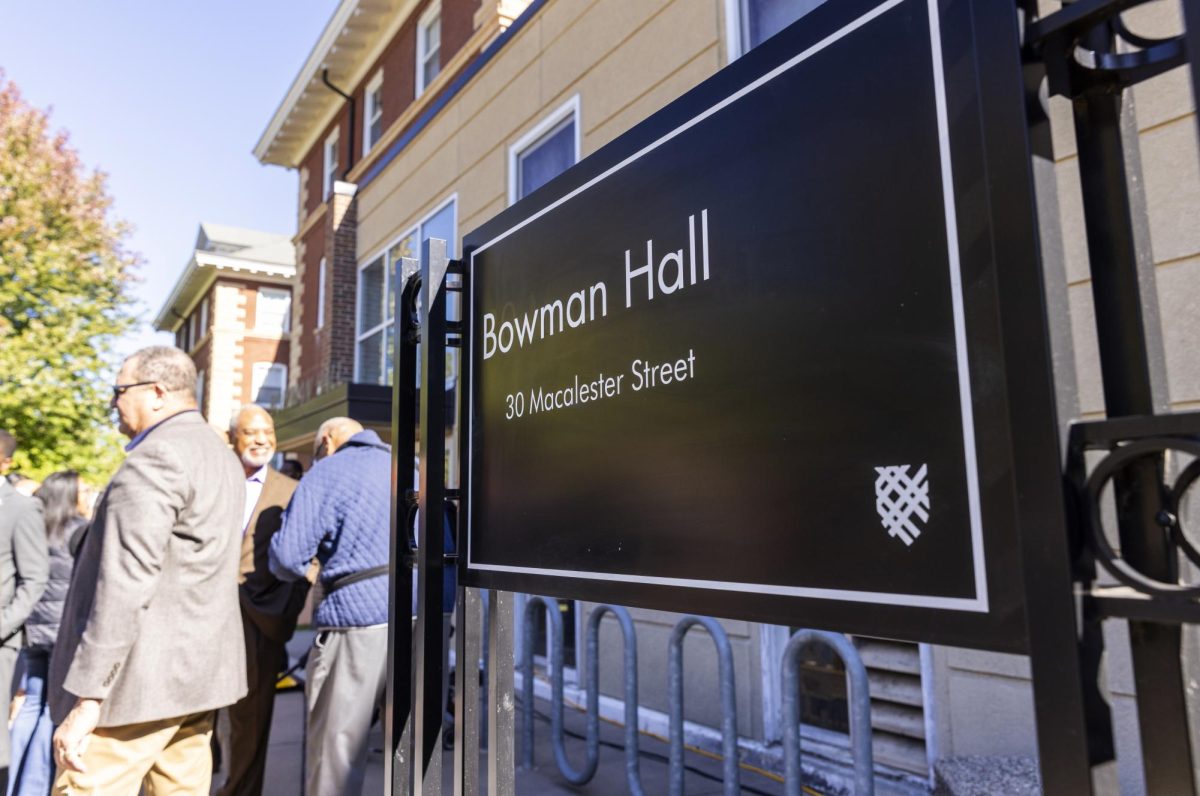The cost of U.S. colleges and universities are shooting toward the moon with no sign of returning to Earth anytime soon. Seemingly unfettered by gravity, college tuition prices inch incrementally higher each year as students and families struggle to breathe at higher (financial) elevation. When my parents attended college in the late 1970s to early 1980s, college cost them about $5,000 a year at private institutions, indicating over a 12 fold increase in the past four decades as tuition at most private colleges now sits above $60,000. As prices rise, it’s important to put this rise into context. Yes, prices are rising but so is the average annual income. Has the increase in annual income matched that of soaring college prices? Let’s delve into the rise and fall of Macalester tuition over the past century to answer this question.
In the 1900-1901 school year, the annual cost of attending Macalester was approximately $190. Though each term only cost $10-12, students paid room and board rent by the week with room costs fluctuating based on the dorm. According to the US embassy, the average wage across all industries was $438 per year. By 1904-1905, tuition bumped up to $200-225 per year while average yearly income remained fairly stagnant.
Jumping ahead to the late 1920s, tuition remained fairly stable from 1927 to the early 1940s. In 1928, students paid $175 per year in tuition and the same in board. This grand total of $350 plateaued over the next decade. Considering the state of the U.S. economy at the time, this stagnation is fitting. After the 1929 stock market crash, unemployment dropped drastically. Though the average annual income was about $474, the average unemployment rate was 18.3 percent. As the economy stabilized in the mid 1940s, tuition was, again, on a slight upswing. Tuition, room and board swelled to $550 in 1945. With a slightly more afloat economy, annual income recovered from the 1930s, coming in at $1,223.


Macalester tuition broke the $1,000 mark for the first time in 1963 as students shelled out $1,320 per year for the full room and board and tuition package. That being said, average personal income more than doubled from 1945 to $2,773 in 1965. Within the next two decades, Macalester tuition really began to skyrocket. In 1980, tuition cost $4,725 with room/board at $1,800. In 1984-1985 these figures increased to $7,520 and $2,600, respectively. Income likewise rose from $9,910 in 1980 to $14,427 in 1985.
Tuition and room and board data from 1990 and onward are depicted in the graph. Because I have the most accurate tuition and average income data for these decades, I will focus my analysis here. The graph to the left maps average annual income in the U.S. along with annual Macalester tuition, including room and board. In 2005, Macalester tuition surpassed average income for the first time and this disparity only grows over the next decade.
Still, the more important consideration is determining the percent increase in income and tuition per year. Both are increasing, but does the increase in income match that of tuition? An analysis of the percent annual change in tuition and income over this time span declares a resounding no. The average yearly increase in Macalester tuition is 5.57 percent while that of annual income in 3.29 percent. Clearly, there is a caveat in this comparison; maybe, you’ve already spotted it. Comparing tuition to average income is an imperfect comparison because of disparate income brackets. The average income across all industries may not be representative of the income of students and families of students that are attending Macalester. Therefore, we can only stretch this comparison so far.
Another interesting analysis of tuition is examining what Macalester tuition would be if the annual increase in tuition was solely due to inflation rates. To calculate this, I began with the cost of tuition in 1990 and calculated the 1991 tuition increase using the inflation rate from 1990. These numbers are also imperfect I did not account for inflation for 1990. The subsequent tuition per year is featured in the second graph. The blue line indicates actual Macalester tuition per year while the red line indicates yearly tuition increases based only on the inflation rate.
The difference between these two lines is stark. Still, there are numerous pressures and needs that drive tuition increases, independent of inflation. For example, the cost of healthcare is also growing more rapidly than can be accounted for by inflation. With small class sizes necessitating a large body of faculty, the cost of supporting employees is also growing year to year. In addition, Macalester’s tuition trend is no different from those at similar institutions. The graphs in this article are, most likely, a surprise to no one as we are all familiar with the high cost of our educations. For me, this analysis brings to mind a comment and a question. First the comment: it is a good reminder of the incredible privilege to be able to afford an education. And the question: When, if at all, will the tuition rocket land back on Earth?






Brian Lewis • Sep 7, 2019 at 1:50 am
Itís an remarkable piece of writing for all the internet users; they will get advantage from it I am sure.